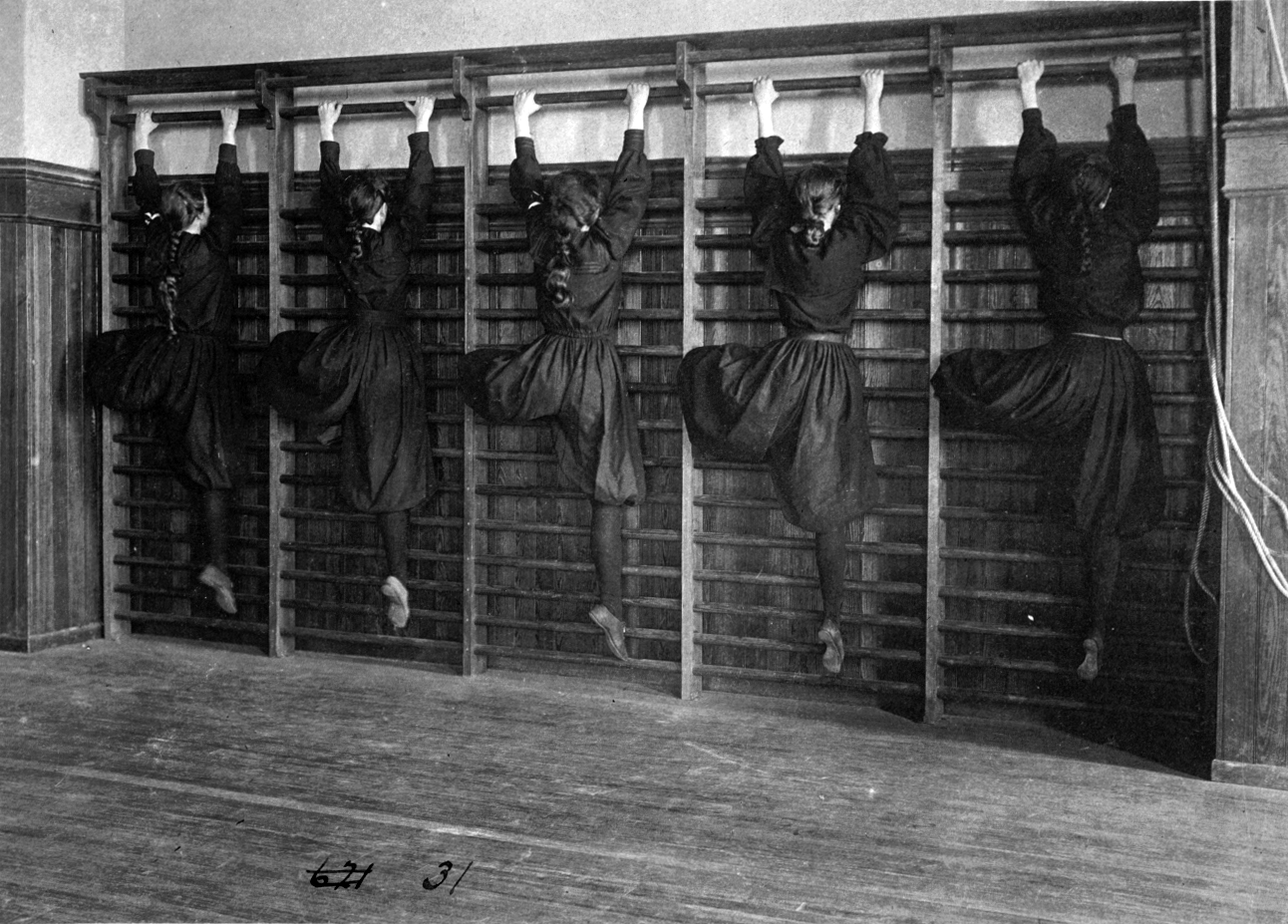|
Wall Bars
Gymnastic wall bars (also known as a gymnastic ladder, Swedish ladder, Swedish wall or as stall bars) were invented at the beginning of the 19th century by the Swedish teacher Per Henrik Ling who, when suffering from arthritis, realized the therapeutic potential of wall-bars exercise. With the support of the Swedish king, Ling founded The Royal Institute for Gymnastics, where he taught gymnastics as an art, which later became the working system across all of Europe. He later invented the vaulting box. With the arrival of immigrants in America, the wall bars were quickly adopted in the USA. Gymnastic wall bars are a multi functional device, made of lamellar beech timber. They can be manufactured in different sizes, from the recovery, for children, up to the double, which may have a size of 2.50 x1, 70 m. The parallel bars are made of beech or maple wood and commonly number 7, 14, or 16 pieces. The top bar is extended further than the other bars to facilitate exercises where th ... [...More Info...] [...Related Items...] OR: [Wikipedia] [Google] [Baidu] |
Per Henrik Ling
Pehr Henrik Ling (15 November 1776 in Södra Ljunga – 3 May 1839 in Stockholm) pioneered the teaching of physical education in Sweden. Ling is credited as the father of Swedish massage. Early life Ling was born in Södra Ljunga, Småland in 1776. His parents were Lars Peter Ling, a minister, and Hedvig Maria (Hedda) Molin. On his maternal side, Ling was the great-great grandson of the famous Swedish scientist Olof Rudbeck (1630–1702), who discovered the human lymphatic system. His family tree extends back to the sixteenth century and includes clergymen and peasants. His great grandfather apparently lived to 105 and had seventeen sons and two daughters. After graduating from the Växjö gymnasium in 1792, he studied theology at Lund University from 1793, completing his degree at Uppsala University in 1799. He then worked as a tutor for several families for the next three years. Travels In 1800, Ling left Sweden and lived abroad and traveled for seven years. He stu ... [...More Info...] [...Related Items...] OR: [Wikipedia] [Google] [Baidu] |
Arthritis
Arthritis is a term often used to mean any disorder that affects joints. Symptoms generally include joint pain and stiffness. Other symptoms may include redness, warmth, swelling, and decreased range of motion of the affected joints. In some types of arthritis, other organs are also affected. Onset can be gradual or sudden. There are over 100 types of arthritis. The most common forms are osteoarthritis (degenerative joint disease) and rheumatoid arthritis. Osteoarthritis usually occurs with age and affects the fingers, knees, and hips. Rheumatoid arthritis is an autoimmune disorder that often affects the hands and feet. Other types include gout, lupus, fibromyalgia, and septic arthritis. They are all types of rheumatic disease. Treatment may include resting the joint and alternating between applying ice and heat. Weight loss and exercise may also be useful. Recommended medications may depend on the form of arthritis. These may include pain medications such as ibuprofen ... [...More Info...] [...Related Items...] OR: [Wikipedia] [Google] [Baidu] |
Gymnastics
Gymnastics is a type of sport that includes physical exercises requiring balance, strength, flexibility, agility, coordination, dedication and endurance. The movements involved in gymnastics contribute to the development of the arms, legs, shoulders, back, chest, and abdominal muscle groups. Gymnastics evolved from exercises used by the ancient Greeks that included skills for mounting and dismounting a horse, and from circus performance skills. The most common form of competitive gymnastics is artistic gymnastics (AG), which consists of, for women (WAG), the events floor, vault, uneven bars, and beam; and for men (MAG), the events floor, vault, rings, pommel horse, parallel bars, and horizontal bar. The governing body for gymnastics throughout the world is the Fédération Internationale de Gymnastique (FIG). Eight sports are governed by the FIG, which include gymnastics for all, men's and women's artistic gymnastics, rhythmic gymnastics, trampolining (including d ... [...More Info...] [...Related Items...] OR: [Wikipedia] [Google] [Baidu] |



